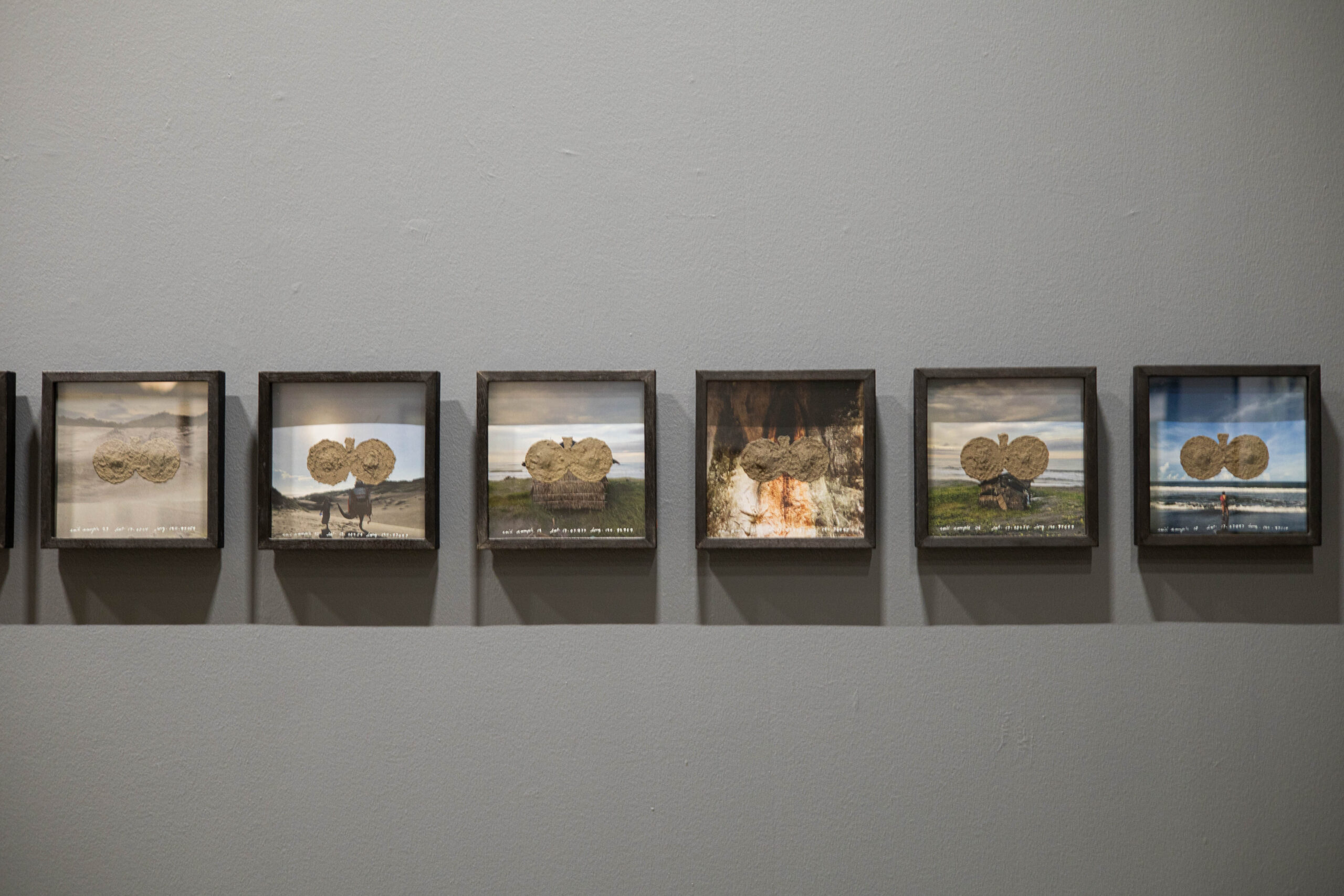In Place of Origin, Rocky Cajigan unpacks a repertoire of images, locales, and symbols relating to attitudes towards The Land and The Body. In particular he draws on the environs of Bontoc, Mountain Province to re-see that space as a body that has been. and ongoingly is still, made anthropic and subjected to transformation by human action upon it. Cajigan traces the shape of that locale, the one he was raised in, from the long tenure of the land in indigenous ritual and agricultural husbandry through to the new commonplaces of that landscape: permanently half-finished builds prickling with rebar against the skyline of the mountains, the stark aesthetics of hollow-block and cement walls, the warp of mirror-bright metal in the space of the traditional landscape. Cajigan brings an unflinching observational eye to bear, using photographic and painterly naturalism, depicting the material facts and images of that landscape but which, for that fact, seems all the more unreal or alien. A comforting return to a familiar, already rehearsed, image of the landscape-body is thwarted and the spaces and symbols of that locale are instead transposed into parts and objects. The role of human beings within and as authors of landscape is placed under examination. An emblem of this can be found in the motif of phallus and testicles taken from Ifugao bawisak earrings and interpolated into photographic images of Place, filled with soil samples from the land itself.
This is carried through into the installation pieces which incorporates soil samples from the Kadchog rice terraces; bed frames, hammocks, gauze, and hair which recall human forms; wood-carvings; salt — a traditional primary trade good — molded into hollow blocks; metal pipes from industrial construction. The contrasting material cultures and symbols of the Cordillera are brought into colocation and comparison. The landscape-body is at once rendered into its material components, made strange by their juxtaposition, and also called to evoke that which is ‘discorporated,’ without a body: a spirit and culture that lies beyond and between the assemblages of physical objects. The pieces also prompt consideration of the relationship between human beings and the nonhuman, showing the ruptures, dominance and violence that often structures that relationship.
Taken as a whole, Place of Origin asks the viewer to consider the sometimes uncomfortable process of humanization, or anthropization, enacted on a landscape; and conversely the alienating affect when the objects of that process are reflected back to US.
– Allan Cariño

